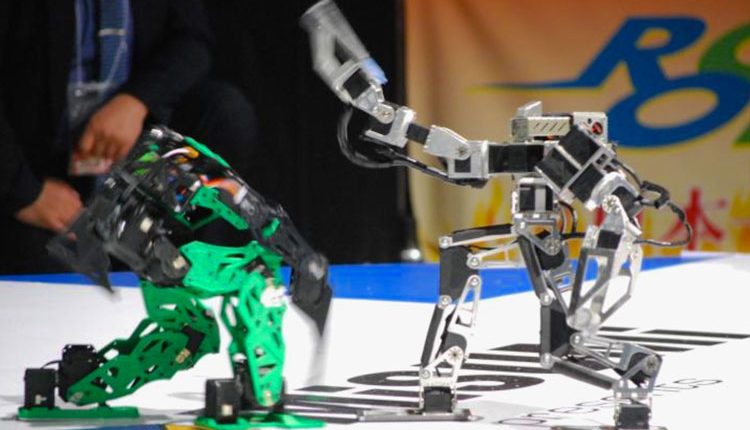Japan has hosted the ROBO-ONE competitive fighting tournament for biped robots for years. It’s always a huge amount of fun to watch (even on video), with creative hardware designs, skilled pilots, and the sorts of moves that are physically impossible for humans to pull off.
Brand new this year is an autonomous fighting competition, with robots squaring off against each other while their human masters can do nothing but sit back helplessly and watch. It goes pretty much as you might expect, with a lot of not much interspersed with some truly epic moments.
This is a challenging sort of competition for autonomous robots: There aren’t any walls, fiducial markings, or even a line around the edge of the combat platform. All sensors are required to be installed on the body of the robots, so overhead cameras (which would have made things much easier) weren’t allowed. Competitors were allowed to connect to their robots wirelessly and use an external computer for control, but everything was still fully autonomous.
For sensing, some robots used sophisticated time-of-flight cameras to localize their opponents in 3D, or a combination of a Raspberry Pi and a visible light camera running OpenCV to detect other robots. From watching the combat footage, that level of sophistication may have been overkill, since many successful competitors used relatively simple infrared or ultrasonic sensor arrays instead. With a ring completely empty of obstacles except for your opponent, it was a fast and effective technique.
In total, there were 16 robots competing, and 12 matches took place to fill out a single elimination bracket. You can watch every match through this YouTube playlist, but unsurprisingly with the first run of an autonomous competition, many of the matches were not particularly eventful. Below are three matches where stuff actually happens, and all three feature my personal favorite robot, Simple Fighter, which somehow came in eighth despite being by far the most dynamic:
This all might seem a little bit silly, but honestly, I think this is the kind of robot competition that we need more of, with an emphasis on software and autonomy. In my personal opinion, robotics competitions like FIRST Robotics are really more about mechanical engineering, since (aside from an almost uselessly brief 15 seconds of autonomy at the start of each match) the competition is fundamentally about designing and building hardware and then having a human remote controlling it.
The hard thing about robotics right now, and by extension what makes robotics so exciting and gives it so much potential, is in software: In using sensors and programming to get mechanical things to do what you want them to do by themselves. And that’s what we’re seeing now in ROBO-ONE, even if it doesn’t really work most of the time. That’s fine, though, because next year it’s going to be better, faster, stronger, and even more fun to watch.


Comments are closed, but trackbacks and pingbacks are open.